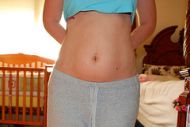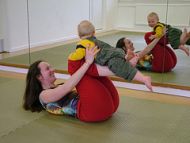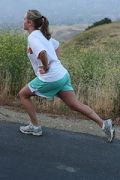Postpartum Fitness

As you already know, it’s a combination of a sensible diet and exercise that’s going to do the trick! But there’s a huge grey area on when, how, what, where, etc. So, lets get a few things straight here. You’ll need a well-balanced combination of both cardio and resistance/strength training. Try to fit in at least four to five cardio sessions a week, of about 40-50 minutes each, along with two to three 30-40 minute sessions of strength/resistance training per week. If you can, it makes sense to join a fitness centre and let the professionals customise your workout, for maximum benefit and ensure safety. There are many dos and don’ts to postpartum fitness, and these will be incorporated into your routine by your trainer. However, in case you would like to work out on your own time at home, here are some exercises that are particularly relevant to the postpartum exerciser.

Kegel Exercises:
To keep the pelvic floor firm and maintain control. These are the muscles that shut off the urine flow. Contract them while exhaling, hold for a few moments, and relax them while inhaling.
Anterior Tilt Exercises:
To counter a common postural deviation of pregnancy, lordosis, or the swayback, which the pregnant woman tends to unconsciously adopt in order to compensate for her changing centre of gravity due to additional weight around the mid-section. Post delivery too, some women may continue to adopt this stance for a while. If not corrected, lordosis leads to backache. To prevent this stand with your back against a wall, feet shoulder width apart and about six inches away from the wall. Press the mid back into the wall and tilt your pelvis forward while doing this. Hold this position for a few seconds while breathing normally and then relax.

Lower Back Stretches And strengthening Exercises:
The lower back is the common area of pain and discomfort during and post pregnancy. Keeping the back relaxed via stretching exercises can alleviate back pain and discomfort. An easy way to stretch the lower back out is to lie on your back and then hug your knees into your chest. To strengthen the back, lie on your stomach with arms extended extended up overhead. Lift the opposite arm and leg up four inches off the floor simultaneuously while exhaling, and lower while inhaling. Switch the arm and leg. Ensure that the legs remain totally straight when doing this exercise and that when lifting, it is done straight up and not a diagonal.

Upper Back Stretches:
One of the effects of lordosis (swayback) is that it throws the shoulders backward excessively, causing the upper back to ache and sometimes even cramp. Upper back stretches will ease the area and get rid of pain and discomfort. Hug yourself really tight, rounding the shoulders inward and trying to walk the fingers as close to your spine as possible.
Quadricep Strengtheners:
It’s important to keep the muscles in the front of the thighs very strong during and post pregnancy in order to help the knees (which are essentially a weak joint) cope with the extra postpartum weight. Squats and lunges are a good way to do this.

Hip Toners:
As many women spread out and sag at the hips during pregnancy, gluteal (hip muscle) exercises will help. Back lunges (lunges done extending the leg backwards) are a great way to tone up the butt.
Abdominal exercises:
These will help pull back and tighten your overstretched and sometimes sagging belly. If you’ve had a C-section not too long ago, exercise caution when working those lower abs. Modified sit-ups and crusnches are good exercises to begin with.
On all of the above strengthening exercises, begin by doing two sets of 10-12 reps. With the stretches hold each for 20-40 seconds while breathing normally.
And Finally:
Get postpartum medical clearance to exercise. Those who’ve had a C-Section need to start exercising again later than those who have had a normal delivery. Preferably, work out under supervision of a qualified postnatal fitness trainer’s care and guidance. Remember that every individual is different and what is/isn’t appropriate for each person may vary vastly. We have given here a general guideline, but a qualified nutritionalist and fitness professional( in conjunction with your gynaec) would be the best persons to determine and quantify your specific dietary and exercise requirements.